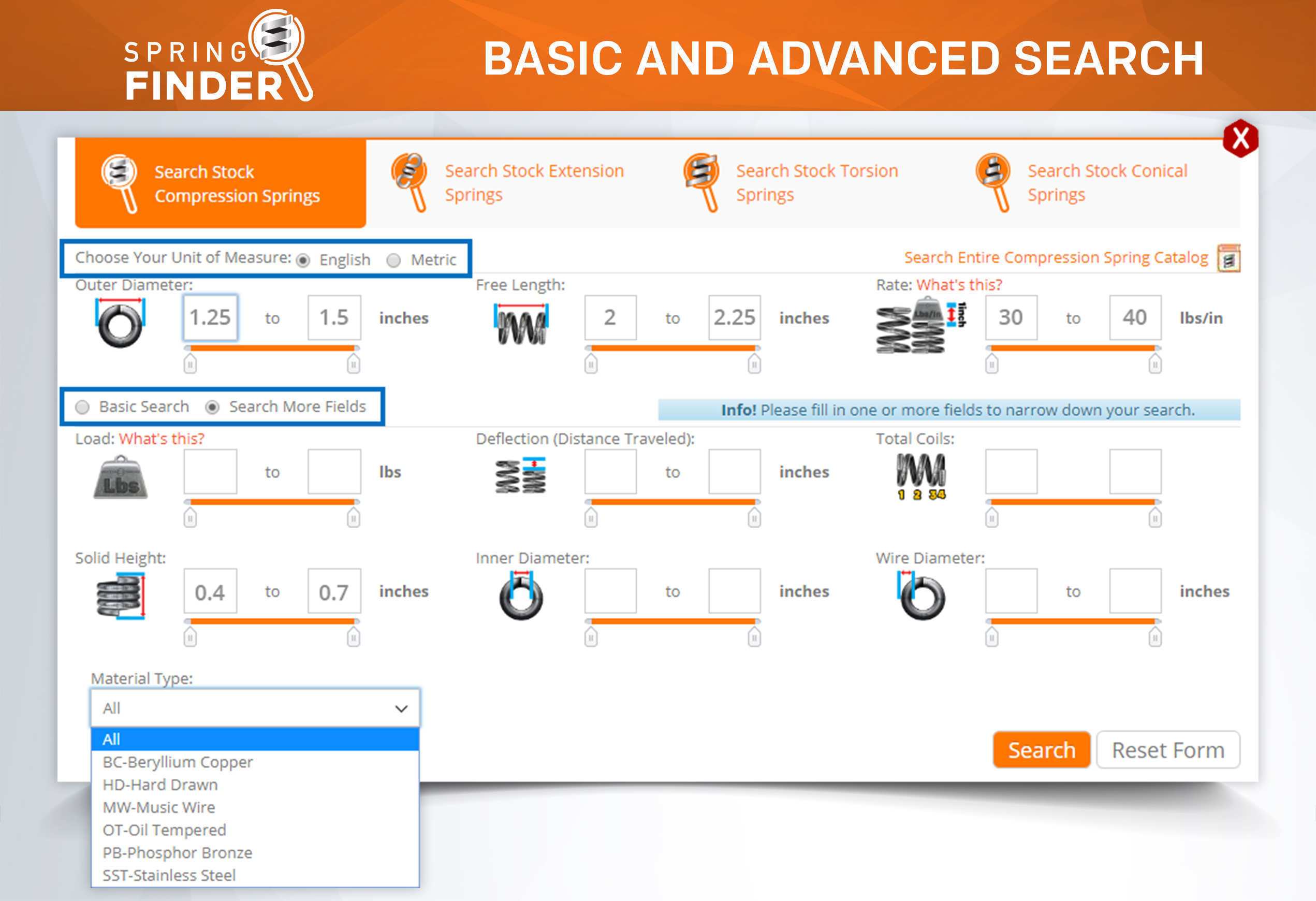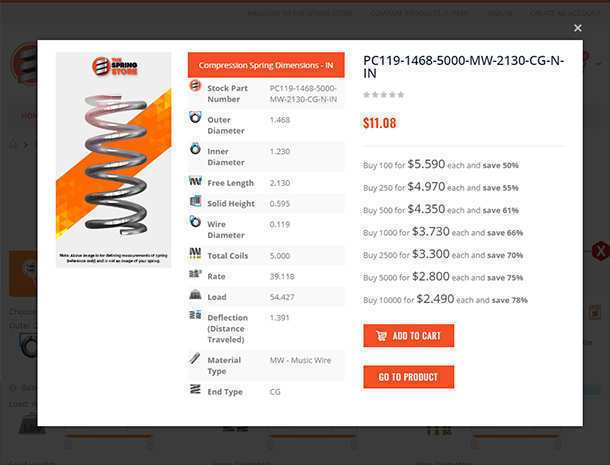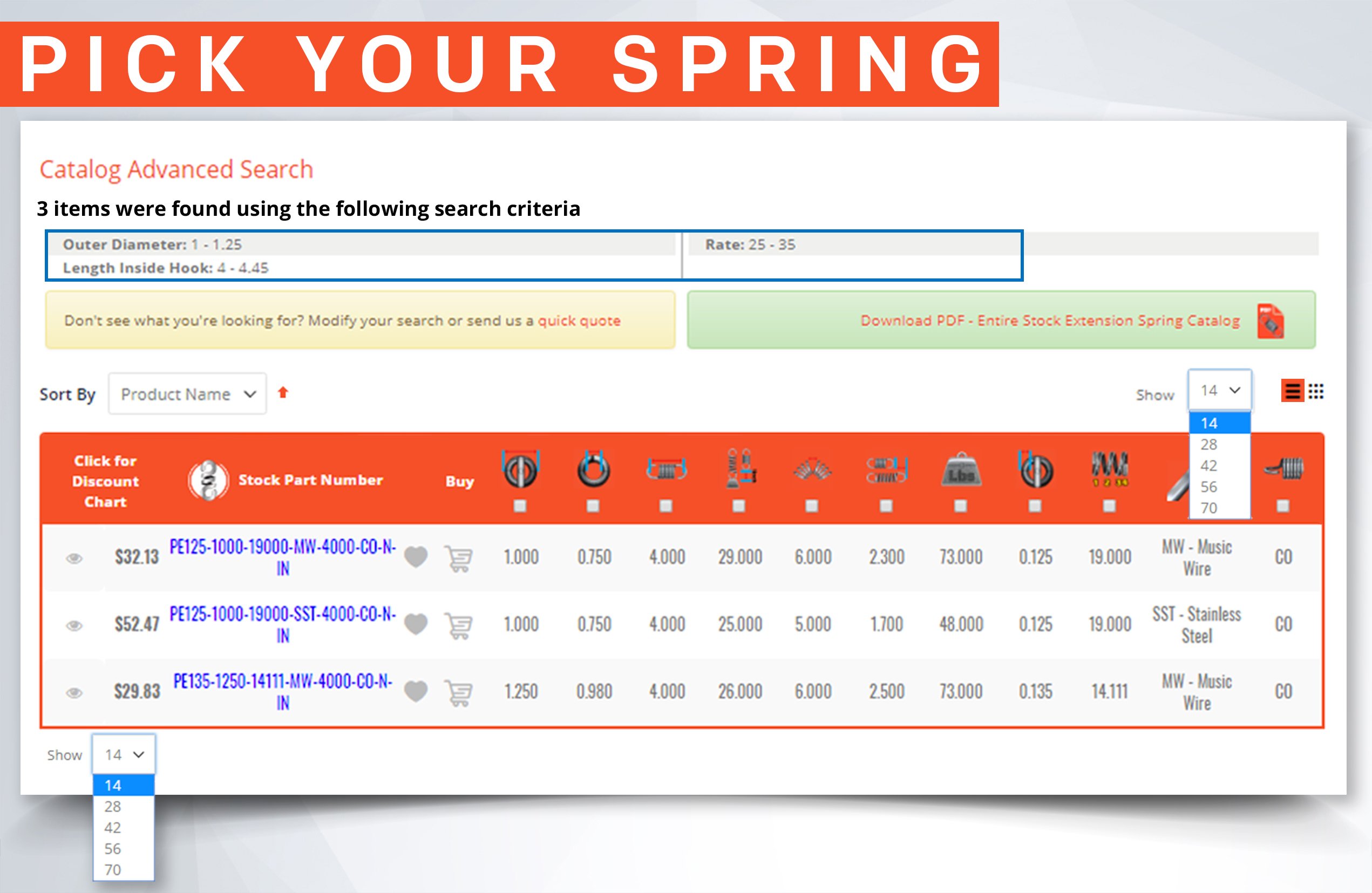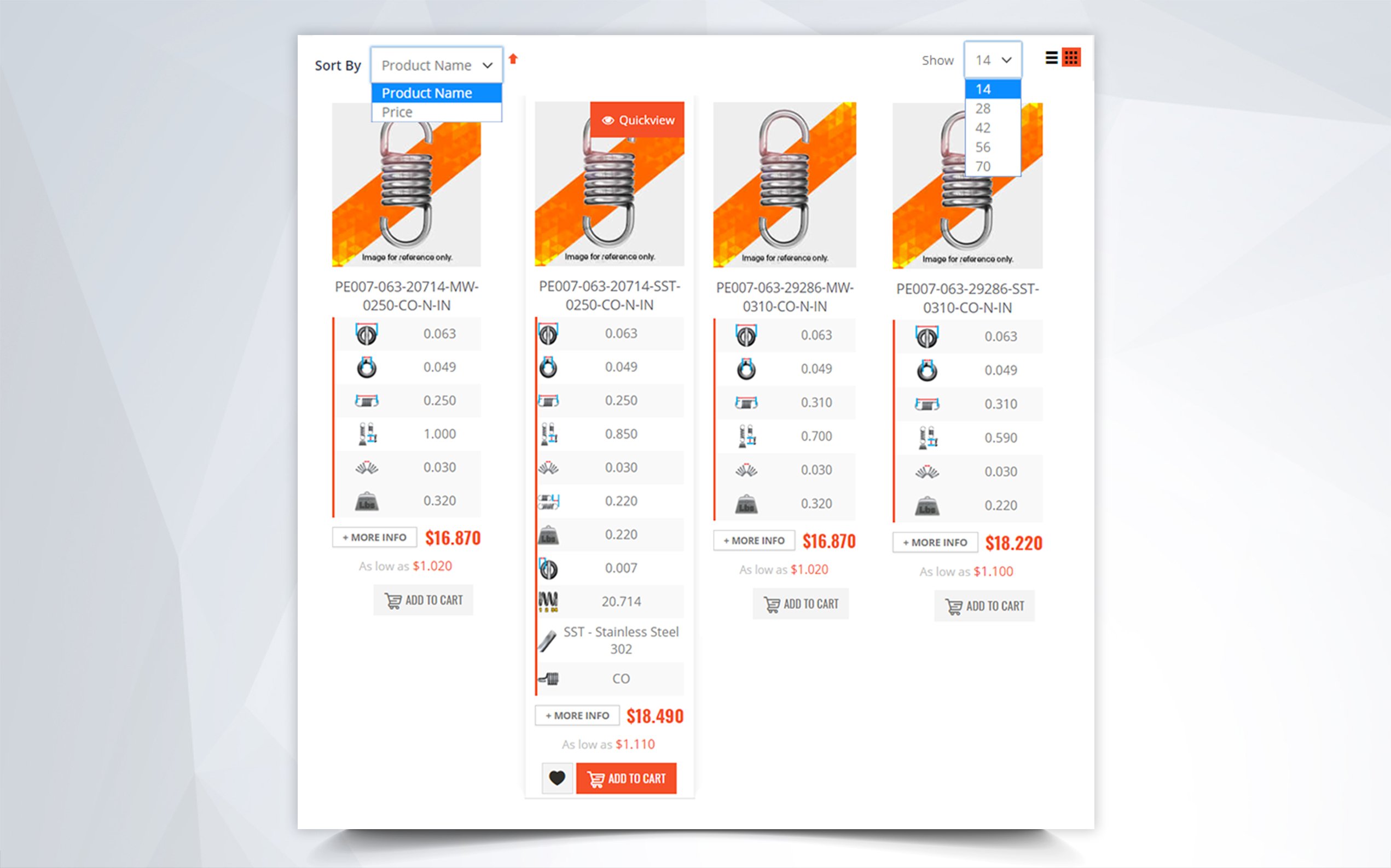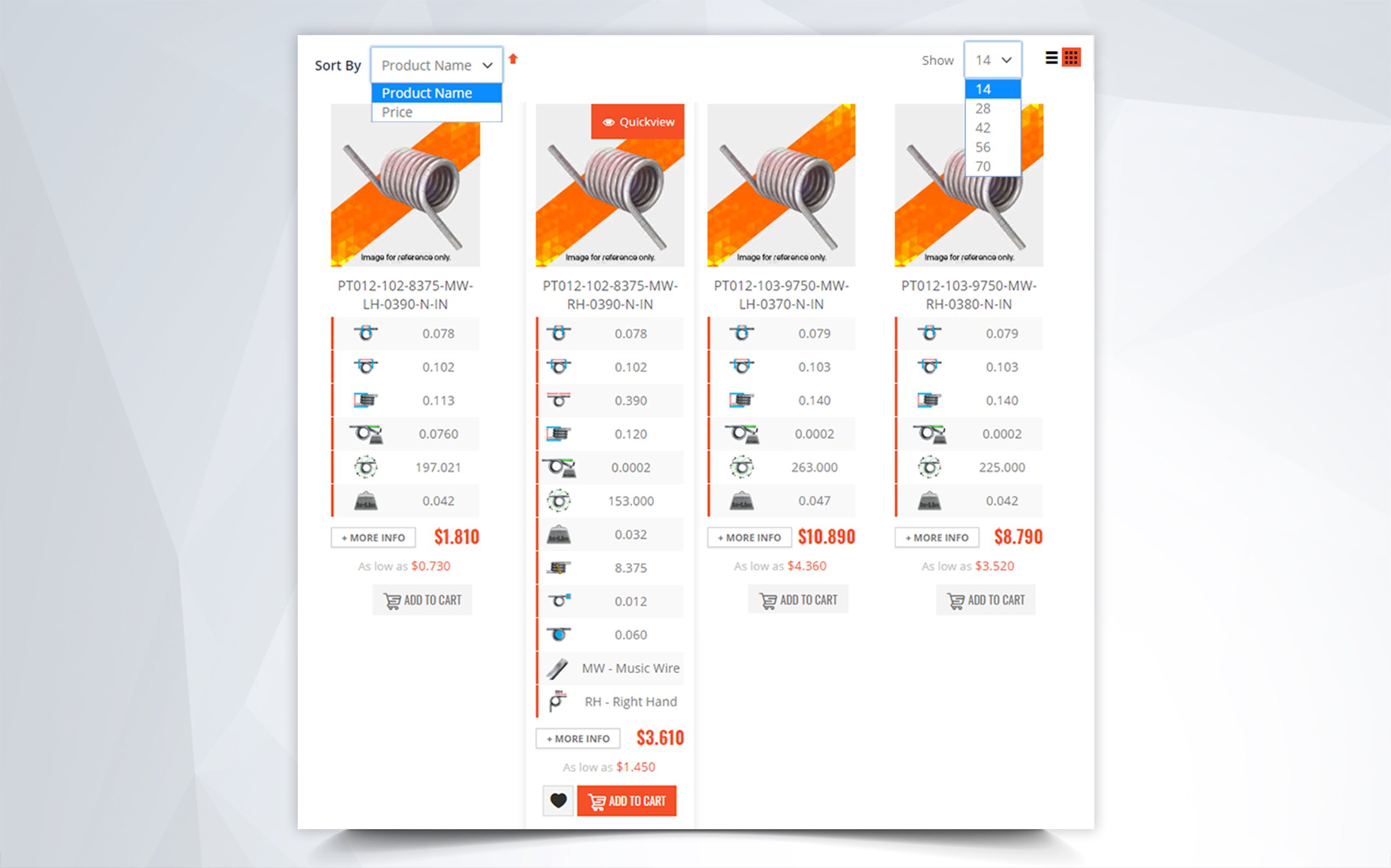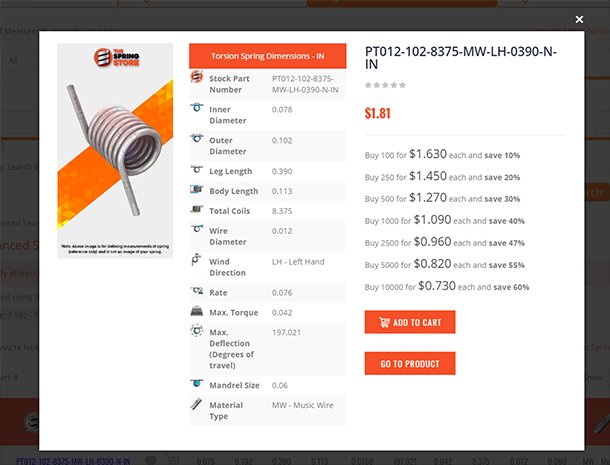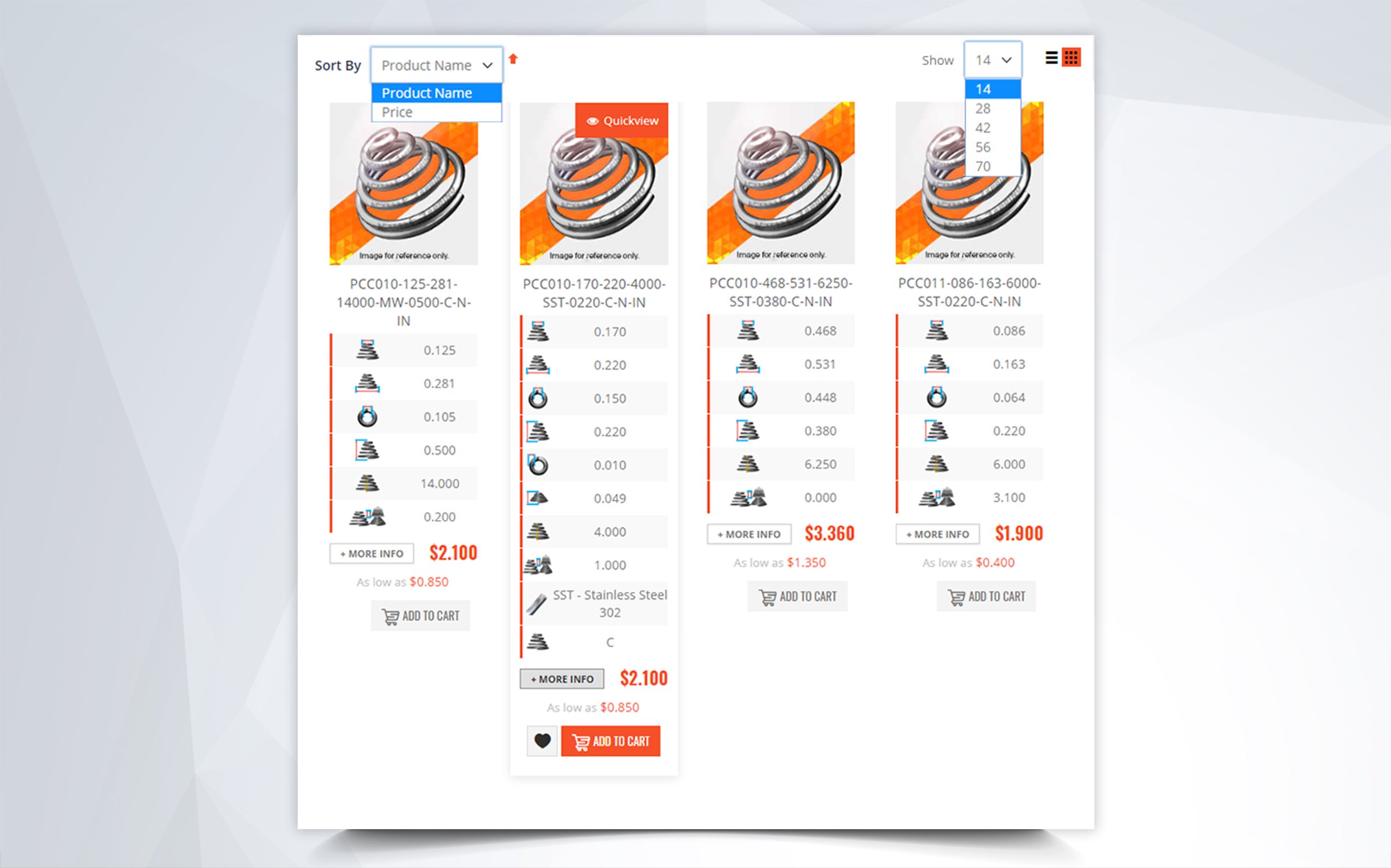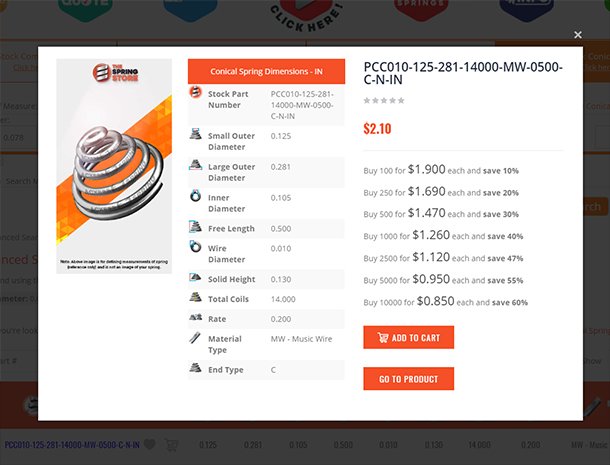Compression Metal Springs
Definition: Springs made of metal material which may be an alloy, steel, and even more extravagant metal types depending on what it is being used on.
You may find both stock and custom compression metal springs at CompressionSpring.com. After all, we do specialize in metal spring manufacturing and the most common of all metal springs are metal compression springs.
Metal compression springs are open wound helical springs. This means that, as they are formed and wound during their manufacturing, there is pitch (space in between coils) added to the process so that the compression spring is able to go through with its requirements of compressing and storing energy when pushed and releasing it once the applied force is released. A metal compression spring’s coils have memory so that they return to their free length but the memory and elasticity of the spring as well as its force depend on two factors: physical dimensions and metal material type.
Some material types are harder than others. As an example, we’ll use the two most common material types in the production of metal compression springs:
- Music Wire
- Stainless Steel 302


Music wire is the most common material type because it is the most economical and you can use it with any spring that doesn’t have to undergo extremely high temperatures or resist a corrosive environment. For those special cases, you have stainless steel 302 which is the most common and economical type of stainless steel. Stainless steel 17-7 will be required for temperatures slightly higher than what stainless steel 302 can withstand and stainless steel 316 is 85% nonmagnetic. So, for a regular case where your spring is only being exposed to moisture or high temperatures below 550º Fahrenheit, you use stainless steel 302.
Stainless steel 302 is a bit softer than music wire so a spring with the same physical dimensions will be weaker and more elastic if it is made from stainless steel 302 than if it is made from music wire.
For wire diameters larger than 0.115” that don’t have any special requirements as far as high temperatures or corrosion resistance, we use chrome silicon metal type for it has similar specs to music wire.
Below you will find a list of metal types that can be used to manufacture your compression metal springs.
- Music Wire
- Hard Drawn
- Stainless Steel 302
- Stainless Steel 17-7
- Stainless Steel 316
- Chrome Silicon
- Oil Tempered
- Carbon Valve
- Phosphor Bronze
- Beryllium Copper





